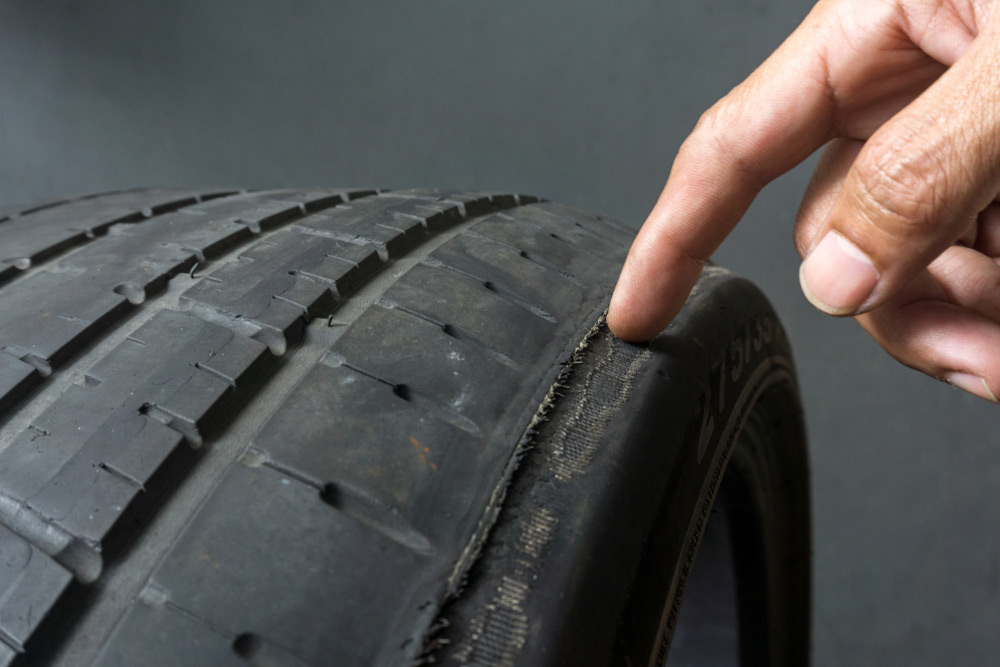Not many people realize how important tyres are. Regardless of how much horsepower and torque it has or if it's the most expensive sports car ever, the only contact between the car's rim and ground is the tyre, or more precisely those 4 tyres. As such, the tyres are incredibly important and essential to a car, from safety, comfort, and all the way to the dynamics of the vehicle. But how do you take care of your tyres the best you can? Everyone wants their tyres to last as long as possible to save as much money as possible. So, let's find out.
Buy good tyres
Seeing how tyres are the most important component on a car, saving money by buying a cheap tyre from an unknown brand is the worst decision you can make, and that's concerning maintenance too. A random brand won't have their rubber compounds as well researched and documented as a well-known brand. If these compounds are inferior, traction capability or durability characteristics will heavily suffer. If durability is so poor that the tread lasts only a few thousand kilometres before it wears out completely, why even bother when you can buy a more expensive and better tyre which can last over 10,000 kilometres, all while being significantly safer.
Tread thickness isn't everything
Even if a tyre still has plenty of tread until it reaches the maximum wear marker, the tyre can still be absolutely useless in terms of traction if it's old. Rubber loses its properties with age, one very noticeable such property that gets lost with age is softness. After a long period of time, the rubber that the tyre is made out of gets stiff, providing no traction whatsoever in the process. This is due to the fact that the rubber can't mould around the asphalt/ground's irregularities, having a smaller contact patch in the process. A smaller contact patch translates to less traction, up to the point of the driving feeling like you are on ice. As such, it's highly recommended that a summer tyre to be changed once every 4 years, and a winter tyre to be changed once every 5 years. Winter tyres are generally more softer, so they harden a bit slower.
This can be checked by looking at the DOT marker on the tyre sidewall. It depends on the tyre, and if it's a directional tyre you won't see it on one side of the car, but you will see it on the other. It is formed out of a 4 digit number, with a simple example being 0120. The first two digits indicate the week of the year that the tyre was manufactured in (this being the first week of the year), the last two digits indicate the last two digits of the year it was manufactured in (this being 2020). As such, if you get to 2024-2025 you need to change these tyres and get new ones.
Check the general condition of the tyre
This is pretty obvious, but if the tread worn down to the tread wear markers (small blocks of rubber found inside the tyre's channels, or sometimes found on the sidewall), or if the tyre has rips, scratches, tears, punctures, pierces from glass/nails, or others, just change the tyre.
Check the tyre's pressure regularly
Car tyres these days are fitted on a rim solely by friction. As such, they aren't 100% air sealed, and they will leak slowly with time. As such, if you inflated them when you bought them and you are checking their pressure a year later, they can deflate significantly in that period of time which leads to increased wear. A deflated tyre has a bigger contact patch, the more a tyre is in contact with the road and the faster it will wear. This is also very important on a spare tyre. What's the use of having a spare tyre, if when you get a flat, the spare is completely deflated?
Switch the tyres around
Most common cars are front-wheel drive (like a Toyota Corolla), with others being rear-wheel drive (like a Lexus RCF) or all-wheel drive, either on demand or permanent (like a Toyota RAV4). In the first two cases, the tyres wear unevenly, being more pronounced in the front-wheel drive cars. Why? Well, a front-wheel drive car is driven by the front wheels, but the car also turns with the front wheels, as such the tyres are heavily loaded constantly. As such, to have all the tyres wear at the same time, it's better to switch them around from one axle to another on a yearly basis. By doing so you can guarantee that they wear more evenly. Also, please bear in mind that some tyres can't be switched around as you wish. Directional tyres need to be switched on the exact same side. Otherwise, the directional pattern will face backward, which isn't intended.
Drive carefully
Even if it's a no-brainer, driving carefully is very important. The less you strain the tyres (low accelerations, avoiding potholes, rough roads, etc.) the longer they will last. Another important factor to consider is that most of the debris is found on the outside of the road (near the curbs and such), that's where stones, possible screws, nails, etc. are thrown by a rotating wheel. As such, as a small precaution measure, it's probably safer to drive a bit further away to avoid a random nail or screw which can puncture the tyre.

